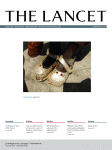英国一项最新研究说,在对疑似冠心病患者进行检查和诊断时,与现在常用的检查手段相比,使用磁共振成像技术检查的效果更好。研究人员因此呼吁在冠心病检查中推广磁共振成像技术。

英国利兹大学等机构研究人员在新一期医学刊物《柳叶刀》上报告说,目前在冠心病检查中使用的常规方法是名为“单光子发射型计算机断层扫描”的技术,本次研究在对752名病人进行检查时对比了这种常规方法与磁共振成像技术检查的效果,结果显示磁共振成像技术至少在两方面更具优势:一是在疑似病例中成功确诊冠心病的比例;二是能够在疑似病例中准确排除非冠心病的比例。
研究人员约翰·格林伍德说,对比结果很好地显示出磁共振成像技术在诊断效果上的优越性,此外,磁共振成像技术的另一个好处是不需要采用辐射手段,而传统诊断技术需要对病人进行辐射,会有一些副作用。由于磁共振成像技术优越性明显,他呼吁医学界能够在冠心病检查中更广泛地采用这种技术。
冠心病是由于脂肪在血管中沉积等原因,患者心血管变得狭窄从而使得心脏供血不足的疾病,症状表现常为胸部疼痛,如不及时确诊治疗,有可能会导致严重的心脏病发作。

Cardiovascular magnetic resonance and single-photon emission computed tomography for diagnosis of coronary heart disease (CE-MARC): a prospective trial
Dr John P Greenwood , Neil Maredia , John F Younger Prof Julia M Brown, Prof Jane Nixon , Colin C Everett, Petra Bijsterveld , John P Ridgway , Aleksandra Radjenovic , Catherine J Dickinson , Prof Stephen G Ball , Sven Plein
Background
In patients with suspected coronary heart disease, single-photon emission computed tomography (SPECT) is the most widely used test for the assessment of myocardial ischaemia, but its diagnostic accuracy is reported to be variable and it exposes patients to ionising radiation. The aim of this study was to establish the diagnostic accuracy of a multiparametric cardiovascular magnetic resonance (CMR) protocol with x-ray coronary angiography as the reference standard, and to compare CMR with SPECT, in patients with suspected coronary heart disease.
Methods
In this prospective trial patients with suspected angina pectoris and at least one cardiovascular risk factor were scheduled for CMR, SPECT, and invasive x-ray coronary angiography. CMR consisted of rest and adenosine stress perfusion, cine imaging, late gadolinium enhancement, and MR coronary angiography. Gated adenosine stress and rest SPECT used 99mTc tetrofosmin. The primary outcome was diagnostic accuracy of CMR. This trial is registered at controlled-trials.com, number ISRCTN77246133.
Findings
In the 752 recruited patients, 39% had significant CHD as identified by x-ray angiography. For multiparametric CMR the sensitivity was 86·5% (95% CI 81·8—90·1), specificity 83·4% (79·5—86·7), positive predictive value 77·2%, (72·1—81·6) and negative predictive value 90·5% (87·1—93·0). The sensitivity of SPECT was 66·5% (95% CI 60·4—72·1), specificity 82·6% (78·5—86·1), positive predictive value 71·4% (65·3—76·9), and negative predictive value 79·1% (74·8—82·8). The sensitivity and negative predictive value of CMR and SPECT differed significantly (p<0·0001 for both) but specificity and positive predictive value did not (p=0·916 and p=0·061, respectively).
Interpretation
CE-MARC is the largest, prospective, real world evaluation of CMR and has established CMR's high diagnostic accuracy in coronary heart disease and CMR's superiority over SPECT. It should be adopted more widely than at present for the investigation of coronary heart disease.
文献链接:https://www.thelancet.com/journals/lancet/article/PIIS0140-6736(11)61335-4/abstract








